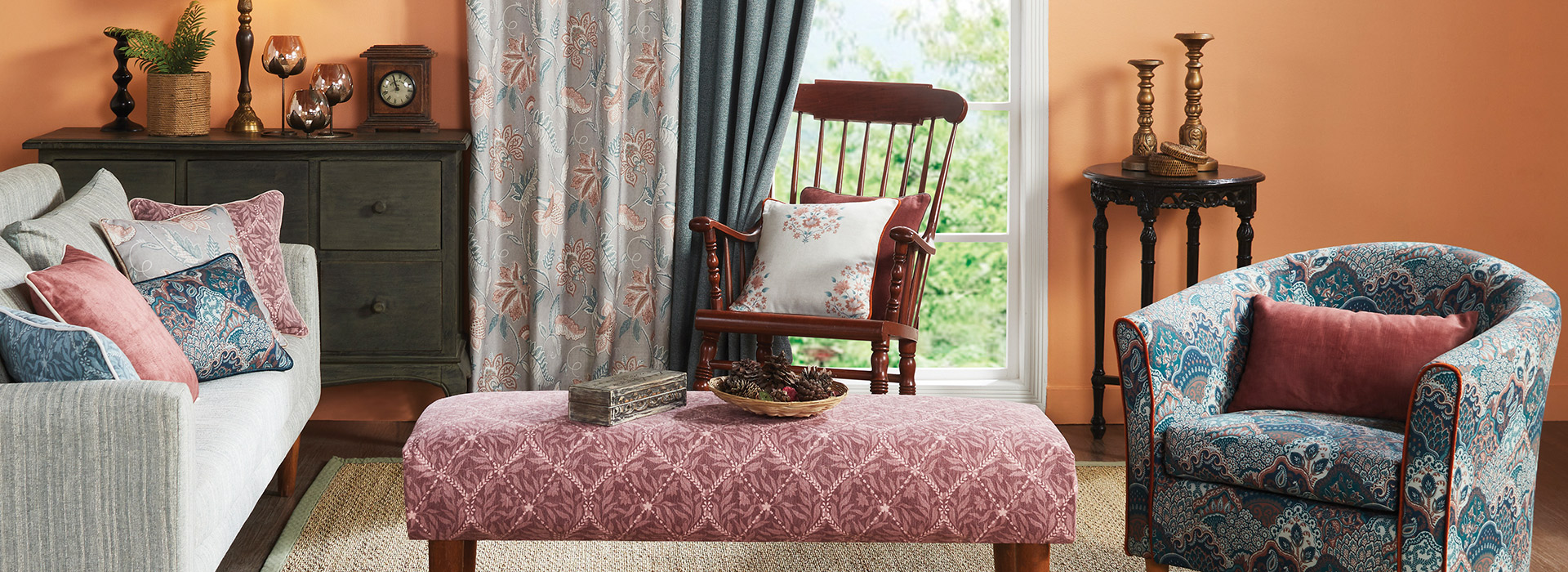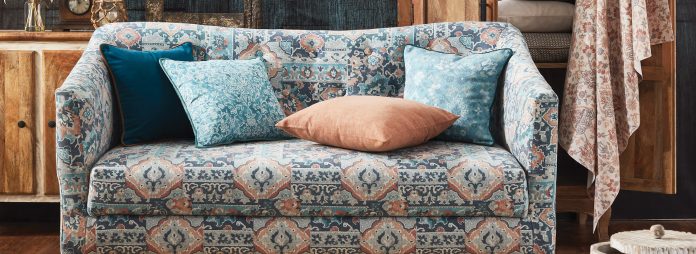Customers who are looking for the most suitable upholstery linens for their homes may find themselves at a loss when confronted with the many accessible possibilities. When it comes to picking home decor fabrics, this is a common roadblock that people run into. Various fabric wholesalers are committed to assisting you in making an informed decision on the material that should be used for your furniture and to simplifying the process as far as is humanly feasible.
The terms “natural fabrics” and “synthetic fabrics” are used interchangeably to refer to the two primary types of textiles. These are different types that may be found in interior design. Within each of these categories, there is room for further subcategorization of the items. Linen, cotton, and silk are all examples of natural textiles, whereas polyester and nylon are examples of synthetic textiles.
Understanding the Different Types of Upholstery Fabrics for Your Home Furnishings
Choosing the perfect fabric for your home furnishings is crucial to the overall look and feel of your living space. With a vast range of upholstery fabrics available in the market, the task of choosing the right one can be quite overwhelming. Two primary types of fabrics available are natural and synthetic fabrics. While natural fabrics like linen, cotton, and silk offer a luxurious feel, synthetic fabrics like polyester and nylon are durable and practical.
When it comes to natural fabrics, linen is an excellent option for a family room, as it is resistant to pilling and fading. Cotton, on the other hand, is highly durable and resists wear and tear, making it an ideal choice for upholstery. Silk, with its sophisticated look and resistance to allergens, fungus, and mildew, is perfect for more formal settings.
Synthetic fabrics like polyester, mixed with other materials, provide excellent resistance to wrinkles and color loss, making them a practical choice for daily use. It is essential to consider the thread count and weave of the fabric as it indicates durability and longevity.
At Fabriclore, we offer a range of handmade and customized upholstery fabrics made from high-quality materials like cotton, silk, denim, velvet, and tweed. Our fabrics are woven with precision and attention to detail, ensuring the longevity of your furniture. With this guide, you can make a well-informed decision about choosing the right fabric for your home furnishings.
The following is a list of examples of different types of textiles. Along with short descriptions of each, to assist you in learning more about them:
Linen
Although it does not have a high level of durability, linen is resistant to pilling and fading. This fabric is quite prone to getting wrinkles and stains on it. On the other hand, filthy linens may be washed and dried in a short amount of time with little effort. The cloth may get softer after being washed, but the dimensions of the item will not change in any way. Linen fabric is an excellent choice for the family room. Since it can be personalized in a variety of ways and has a variety of different patterns.
Cotton
Cotton is a completely natural fiber that resists wear and tear, pilling, and fading very well. It is more prone to wrinkling and burning, and it deteriorates more rapidly. On the other hand, these flaws are often concealed by the use of surface treatments or by mixing with other fibers. The weave as well as the finish of anything may have an effect on how long it will survive and what it can be used for. Canvas, which includes duck and sailcloth, is a more rugged and informal fabric than damask weaves. These are used for more official settings.
Silk
Silk is a sophisticated fabric, and as a result, it should be saved for more sophisticated settings, such as exquisite living rooms. It is not easy to stain, but if it does get filthy, it has to be cleaned thoroughly. Silk is an excellent option for those who suffer from allergies because of its inherent resistance to allergens, fungus, and mildew. The material is robust without being too hefty. Also, it imparts a stunning sheen to the objects that are used in the domestic sphere.

Polyester
Polyester is often mixed with other materials before being used as a fabric for upholstery. You won’t have to worry about it becoming wrinkled or losing its color at any time in the near future. Polyester is not susceptible to shrinking and is quite good at maintaining its original form. The usage of the silk replacement viscose makes it a material that is capable of withstanding wear and tear. Because recent advancements have been made, the price of the cloth is much lower than that of comparable options.
Remember that a greater thread count in the aforementioned textiles for high-end furniture indicates a longer lifetime. This is something to keep in mind. It is important that the upholstery on the house’s sofas, chairs, and any other pieces of upholstered furniture be made of resilient materials. Alternately, objects that are put through daily, intensive use need to be covered with robust, resilient, tightly woven textiles. This is done so that they can withstand wear and tear.
With multifunctional and upholstery linens that have been prepared with carefully customized & handmade, Fabriclore has you covered when it comes to the upkeep of your furniture. Our fabrics are precisely crafted with attention to detail and are made available by Fabric Manufacturer using high-quality materials such as denim, cotton, silk, velvet, and tweed. These materials are then woven into our products. With any hope, you now have sufficient knowledge about using textiles as home décor to make a decision that is properly informed.
















